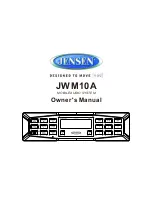
USER'S MANUAL, VERSION 2.0
Copyright © Convergence Systems Limited 2021, All Rights Reserved
8
3
Regulatory Regions
3.1
Introduction
The CSL Intelligent Fixed Reader family is offered as various regulatory region specific
models, using the format of
CS
XYZ
-
N
where
N
is of various values, each covering one
regulatory region. Each regulatory region may apply to one or more countries.
For example, CS463-2 covers the regulatory region of FCC, which includes USA, Canada,
Mexico and other Latin America Countries that use the FCC frequency range.
The following is a model table with N as index, for
CS
XYZ
-
N
, and the corresponding
frequency band and regulatory regions:
N=1
:
865-868 MHz for Europe ETSI, Russia, Mid-East countries, Hong Kong
865-867 MHz for India
N=2
:
902-928 MHz, FCC, for USA, Canada and Mexico. Hopping frequencies locked
N=2 AS
:
920-926 MHz, Australia. Hopping frequencies locked
N=2 NZ
:
921.5-928 MHz, New Zealand. Hopping frequencies locked
N=2 OFCA
: 920-925 MHz, Hong Kong. Hopping frequencies locked
N=2 RW
:
920-928 MHz, Rest of the World, e.g. Philippines, Brazil, Peru, Uruguay, and
any other countries that use sub or partial sections of the FCC frequency range
N=4
:
922-928 MHz, Taiwan
N=6
:
917-920.8 MHz, South Korea
N=7
:
920-925 MHz, China
N=8
:
916.7-920.9 MHz, Japan
N=9
:
915-921 MHz, Europe Upper Band
Note that you MUST follow each country’s emission regulation and use the appropriate
regulatory region model. For example, in USA you can only use N = “2”. In Hong
Kong you can only use N = “2 OFCA” or N= “1”. In Australia you can only use N = “2
AS”. etc.
Some regulatory regions require the User Manual to contain some declaration statement. The
following sections are those statements.









































